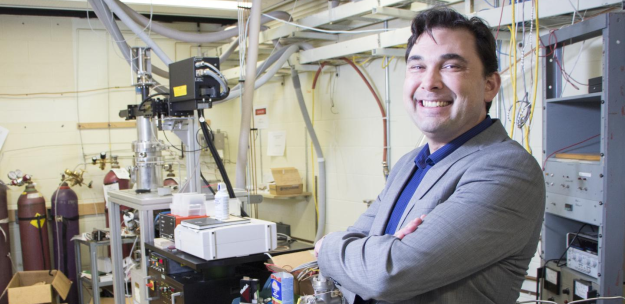
Usask, U.K. physicists teaming up to develop quantum magnetometer
By DE Staff
GeneralHighly precise magnetic sensor has potential applications in prospecting, medical and quantum computing.

USask physicist Michael Bradley. (Photo credit: University of Saskatchewan)
The Usask team is led by physicist Michael Bradley, one of eight winners of the U.K.-Canada Quantum Technologies Competition aimed at accelerating promising quantum technologies for real-world applications.
According to Bradley, the quantum magnetometer underdevelopment would be smaller, cheaper and easier for geophysical companies to use in taking measurements of ore bodies in remote environments than the bulky liquid-helium-cooled devices currently available. As well, the measurements can be taken without the bulky cryogenic cooling apparatus needed for other techniques.
“We aim to design, build and demonstrate a quantum magnetometer that will be a powerful way to measure small magnetic fields,” Bradley said. “In three years, we want to be able to place in the hands of geophysicists a Rubik’s Cube-sized box containing this new measurement tool for precisely detecting the magnetic field signatures of various rock formations.”
The Usask magnetometer’s design relies on the wavelike quantum mechanical properties of electrons to make high precision measurements. At its core lies a diamond with naturally occurring atomic impurity (a nitrogen-vacancy centre) in which energy levels of trapped electrons are extremely sensitive to a nearby magnetic field. An optical signal from the electrons excited by the magnetic field is detected by a laser.
In addition to prospecting, Bradley says, other potential applications could include a way for neuro-scientists to precisely monitor brain activity, as well as provide improved sensor technology for environmental monitoring or applications in developing quantum computers.
www.usask.ca
